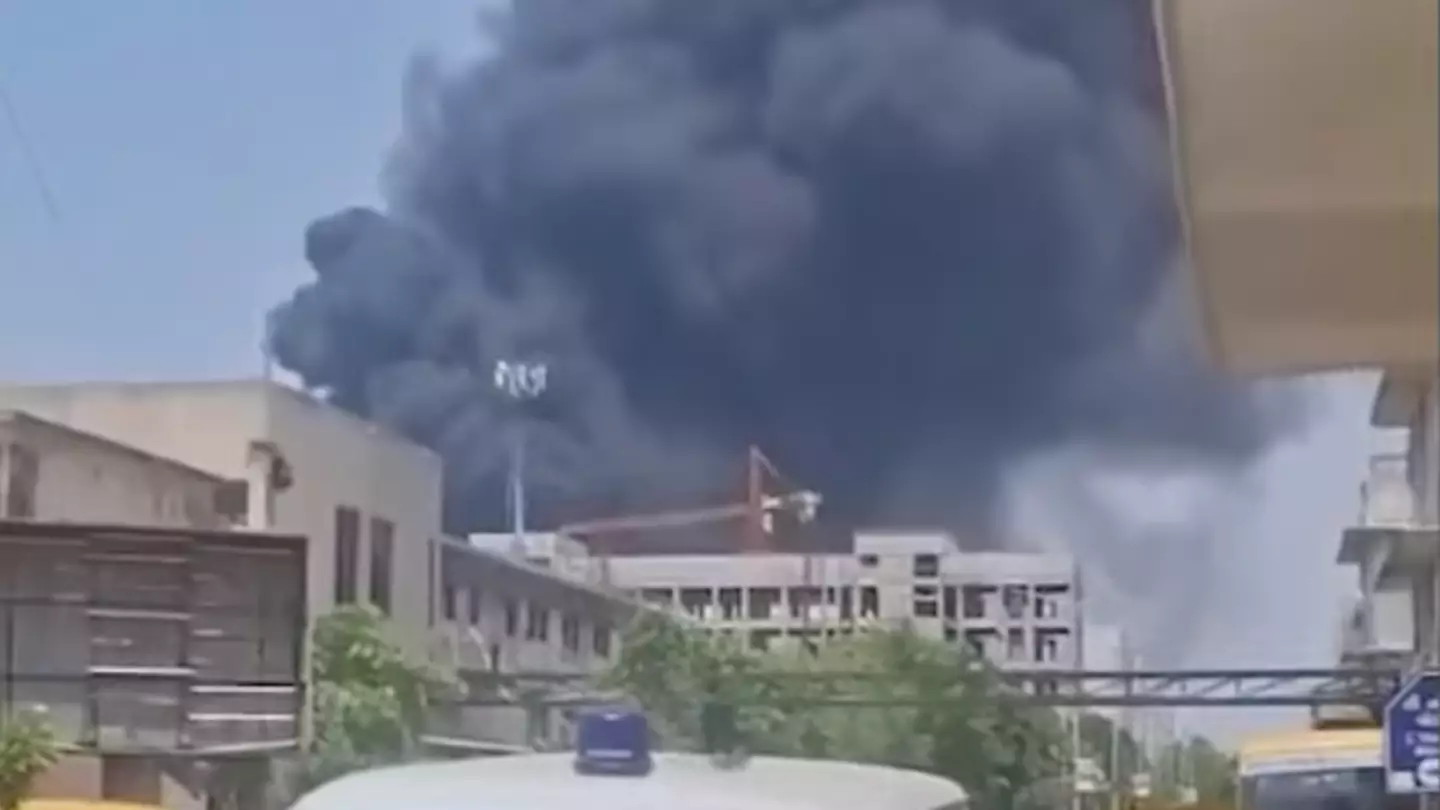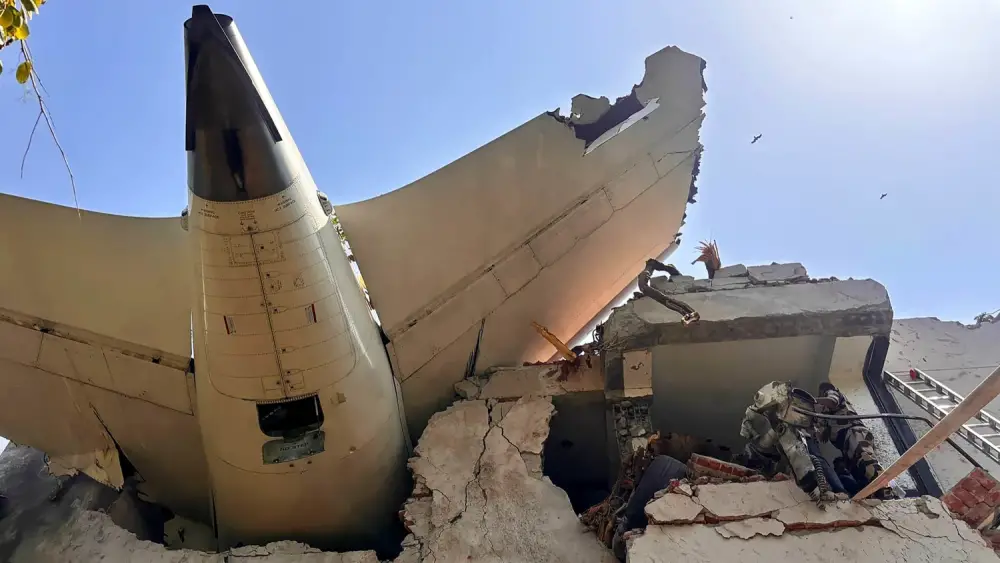It began as a routine international flight — a journey from Ahmedabad, India, to London’s Gatwick Airport. Passengers boarded, flight attendants prepped the cabin, and the engines of the Boeing 787-8 Dreamliner roared to life. But within moments of takeoff, what should have been an uneventful trip turned into a national tragedy that has sent shockwaves through both India and the United Kingdom.
Authorities and citizens alike are reeling from the horrific crash of Air India Flight AI171. With hundreds of lives affected, questions abound. How could such a catastrophe occur so quickly after departure? Who was on board? And most importantly, what happens next?
Let’s take a closer look at what we know so far about this devastating event.
A Sudden Disaster After Takeoff
According to India’s Directorate General of Civil Aviation, Air India Flight AI171 departed from Ahmedabad’s Sardar Vallabhbhai Patel International Airport on the afternoon of June 12. The aircraft took off at approximately 13:38 IST (8:08 UTC). Within seconds, distress calls came in.
Initial data suggests the aircraft made a “MAYDAY” call immediately after lifting off from Runway 23 — and then fell silent. Flight tracking services, including FlightRadar24, confirm that the final signal was received less than a minute into the flight, with the aircraft reaching only around 625 feet in altitude.
Tragically, the Boeing jet crashed in Meghani Nagar, a densely populated residential area near the airport, striking buildings and causing a fireball that could be seen for miles. Smoke blanketed the area as emergency sirens echoed through the neighborhood.
The People Onboard
The flight was carrying 242 individuals — 230 passengers and 12 crew members. Among them were 169 Indian nationals, 53 British nationals, 7 Portuguese citizens, and 1 Canadian traveler.
Officials have confirmed that a number of victims have been found deceased at the crash site, though an exact death toll has not been finalized as rescue operations are ongoing. Early reports suggest more than 30 bodies have been recovered, with several survivors critically injured and rushed to hospitals.
Families are now desperately awaiting news, both in India and abroad.
Immediate Emergency Response
Within minutes of the crash, local fire brigades, paramedics, and national disaster relief forces mobilized. Six emergency teams responded, working tirelessly amid debris and wreckage to locate survivors and extinguish fires.
Footage from the scene reveals haunting images: scorched buildings, scattered airplane parts, and emergency workers carrying stretchers. Residents in the area described hearing a deafening roar followed by a violent explosion.
The chaos is compounded by the fact that the crash occurred in a civilian neighborhood, where several buildings, including a nearby doctors’ hostel, were impacted. Dozens of civilians may also be among the injured.
Statements from Officials
Air India’s Chairman, Natarajan Chandrasekaran, expressed sorrow in a statement released shortly after the crash:
“With profound sorrow, I confirm that Air India Flight AI171 was involved in a tragic accident. Our thoughts and deepest condolences go out to all families and loved ones affected by this devastating event. We are doing everything we can to support the emergency response teams and the victims’ families.”
India’s Prime Minister Narendra Modi also addressed the nation, stating:
“The tragedy in Ahmedabad has stunned and saddened us all. My thoughts are with everyone affected. Emergency services are working tirelessly, and we will ensure all support is extended.”
In the UK, Prime Minister Sir Keir Starmer offered condolences, noting that the incident is especially heartbreaking given the number of British citizens on board.
Airport and Airline Response
The crash prompted the immediate closure of Sardar Vallabhbhai Patel International Airport, with all operations suspended until further notice. A spokesperson urged passengers to check with their airlines and avoid heading to the airport as authorities manage the scene.
London Gatwick Airport confirmed that the flight had been scheduled to arrive at 18:25 local time. They are in contact with Indian officials and are preparing to support British families.
Air India, meanwhile, has set up emergency hotlines and family assistance centers both in Ahmedabad and in London. Support teams are assisting relatives of the passengers, including coordination for those who may need to travel urgently.
The Aircraft Involved
The aircraft that crashed was a Boeing 787-8 Dreamliner — a long-range, fuel-efficient jet that has become a staple of international air travel. Registered as VT-ANB, this plane was part of Air India’s active fleet.
Known for its advanced systems and strong safety record, the Dreamliner’s involvement in this crash raises serious questions. Aviation experts are now combing through its maintenance history, previous flights, and onboard data to determine what may have gone wrong.
What Caused the Crash?
At this stage, the cause remains unknown.
The Directorate General of Civil Aviation (DGCA) has confirmed that an official investigation is underway. A team of experts from India’s Aircraft Accident Investigation Bureau (AAIB), along with international aviation advisors and Boeing representatives, are on site to assess the damage and recover the black box and cockpit voice recorder.
The only information currently available is that the plane issued a “MAYDAY” distress call shortly after takeoff and then lost contact.
Investigators are expected to explore a range of possibilities — including mechanical failure, bird strike, pilot error, or fuel issues — but no conclusions have been made public.
Global Reactions and Support
The tragedy has prompted an outpouring of grief around the world.
International media are covering the story extensively, and major leaders have reached out in solidarity. Airline industry representatives, human rights organizations, and expatriate Indian and British communities are expressing sorrow and support across social media platforms.
Meanwhile, candlelight vigils are being organized in both Ahmedabad and London, offering people a space to gather, mourn, and remember the victims.
What Happens Next?
The coming days will be critical.
First and foremost, the priority is rescue and recovery. Emergency crews continue to search the site, and temporary shelters have been set up for displaced residents in the Meghani Nagar neighborhood.
The Indian government has promised a full investigation and transparent reporting, and Air India has vowed to cooperate at every level. International aviation bodies, including the International Civil Aviation Organization (ICAO), may also become involved in the assessment.
For the families of those on board, however, nothing will erase the pain. Grieving relatives await answers — and accountability.
Final Thought: A Global Tragedy That Hits Home
While airline travel is statistically among the safest modes of transport, tragedies like this serve as a painful reminder of its rare yet devastating risks. The loss of Flight AI171 is not just a local or regional disaster; it is a global human tragedy.
In a world increasingly connected by air travel, incidents like this ripple through communities, cultures, and borders. Behind each name on the passenger list is a story: a family vacation, a business meeting, a return home, a new adventure — now cut short.
As the investigation unfolds and more details emerge, the world watches with heavy hearts. And while nothing can undo the horror of this day, efforts must now focus on healing, honoring the victims, and ensuring that something like this never happens again.

Indian authorities have confirmed over 240 individuals were on the flight (Sky News)

